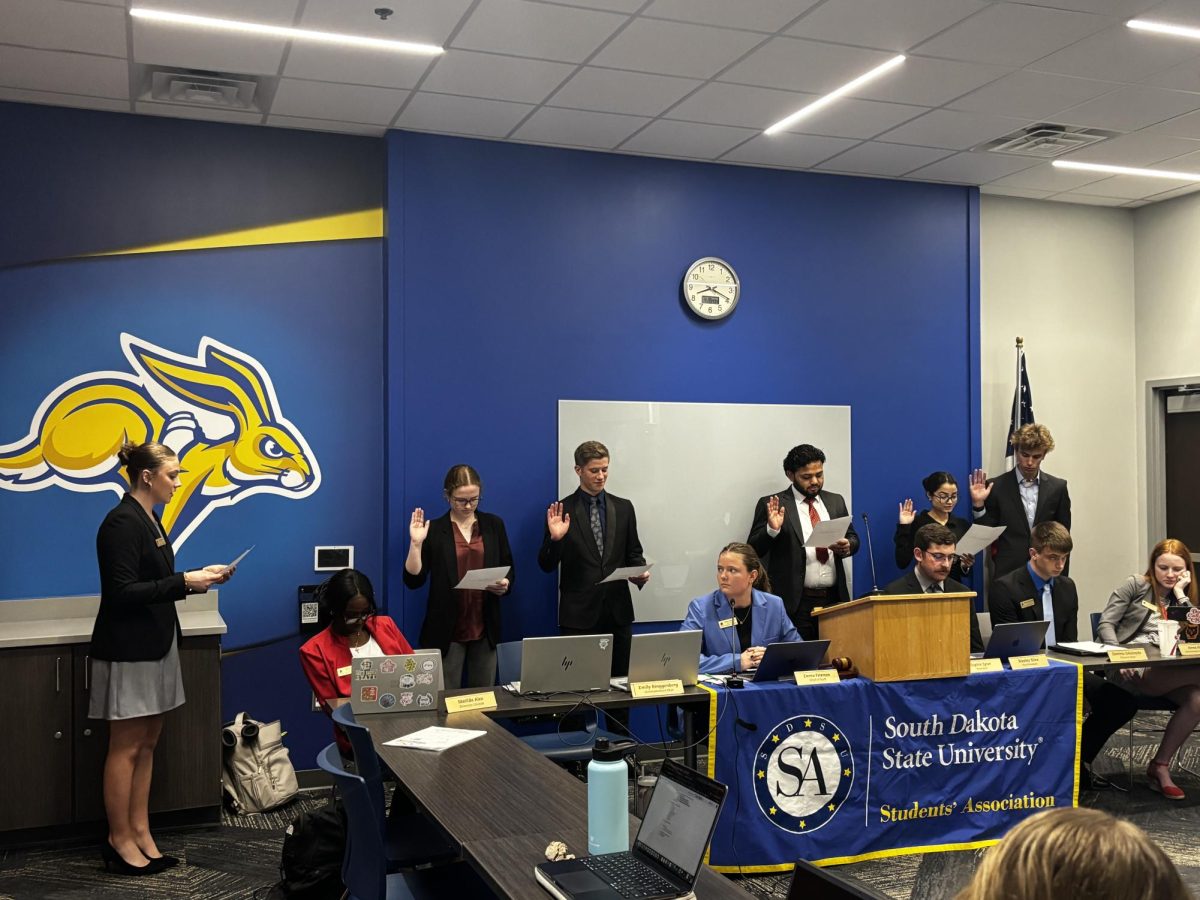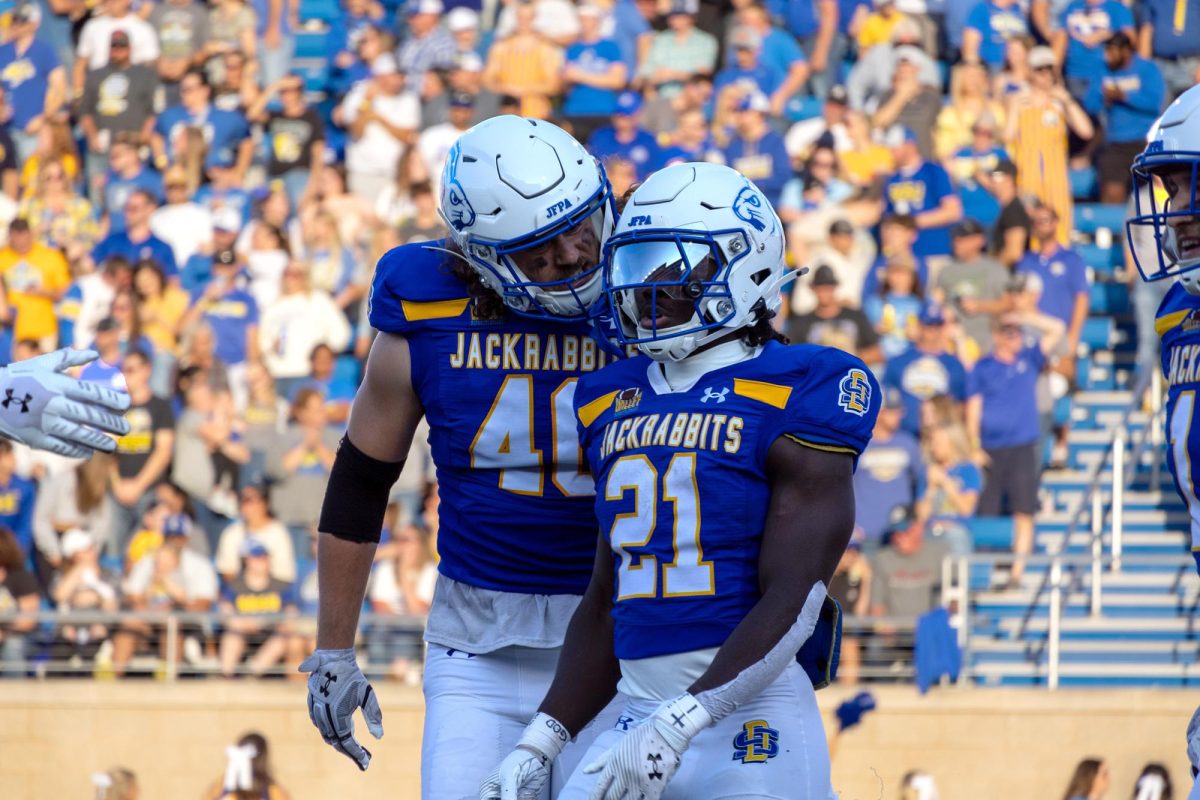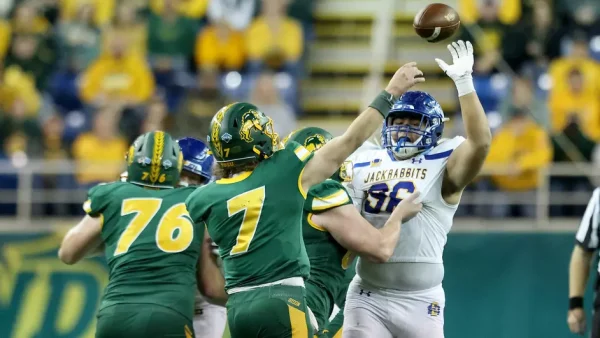Happy Holidays
December 9, 2008
Jamison Lamp
With over 160 countries officially celebrating Christmas, variations in traditions are present around the world, as well as at SDSU.
Steve Landman, a native of the Northern parts of the Netherlands, said the main focus of his holiday traditions is family.
“The majority do not do traditional gifts,” Landman said. “It is more of a time for families to get together.”
Landman noted that a difference between holidays in South Dakota and the Netherlands is the white Christmases and the secular concentration, here.
“Americans focus more on Santa and gifts rather than the religious meanings,” Landman said.
Netherlands’ traditions begin when St. Nicholas comes to the country on Dec. 5. It is believed that St. Nicholas enters on a steamboat to give children small gifts. Landman said the American Santa is a short, jolly man who drives a sleigh, while St. Nicholas in the Netherlands is believed to be a tall, skinny man who walks over the rooftops.
Across the ocean and in the opposite hemisphere, traditions differ; the people of Uruguay have their own unique celebrations.
Carmela Garcia, formerly of Uruguay, remembers Christmas spent at her grandma’s beach house.
“I always thought of Papa Noel as a little guy; I guess because all of the Christmas trees were little. We didn’t cut down trees and bring (them) inside,” Garcia said. “Usually, we lit up the palm trees in the backyard.”
Garcia said she also remembered a few Christmases during which gifts were hid outside. Children wait until midnight to open these gifts.
A large part of the holiday is celebrating the three kings; Garcia said that many kids put shoes out by a doorway or obvious spot in the house where the kings leave gifts.
“I always left a bowl of water and grass out for the animal of the king; I took it very seriously,” Garcia said.
The traditional Christmas meal for Garcia mainly consists of seafood.
“We still eat seafood lasagna for Christmas here in America.”
Garcia noted that the biggest difference in celebrating is the weather.
“It feels more like Christmas here. We were actually in the middle of summer break while celebrating Christmas.”
While for some cultures, traditions are similar to American ways; others have little to no similarities.
In Nepal, there is no celebration that mimics the Americanized way of celebrating.
Sameer Shrestha, a Nepal native studying computer science, said the most similar holiday would probably be Tihar, also known as the Festival of Lights. The celebrations begin after the 13th day of the waning moon of October.
“There are lots of sweets,” Shrestha said. “We worship the goddess Laxmi.”
Laxmi is the goddess of wealth in Hindu beliefs.
As part of the celebration, there are five important days worshiping different goddess and delicacies.
Shrestha said that on day one, the people of Nepal worship the crow; the second day is devoted to the dog; the third day is in honor of the cow, symbolizing wealth; the fourth day is devoted to a hill made outside the home; and the fifth day is for the Bhai tika. Bhai Tika is when a sister puts Tika – a decorative mark for the forehead – on her brother and prays that he has a long life.
While living in the United States, Shrestha and many friends have taken to celebrating American traditions.
“I am going to celebrate Christmas in the States. I might be going somewhere; I am unsure of my plans yet.”
Shrestha said that he probably would not be putting up a tree but would be doing some decorating similar to what they do in Nepal.
#1.882101:2285536835.jpg:frontpagegraphic.jpg::





















